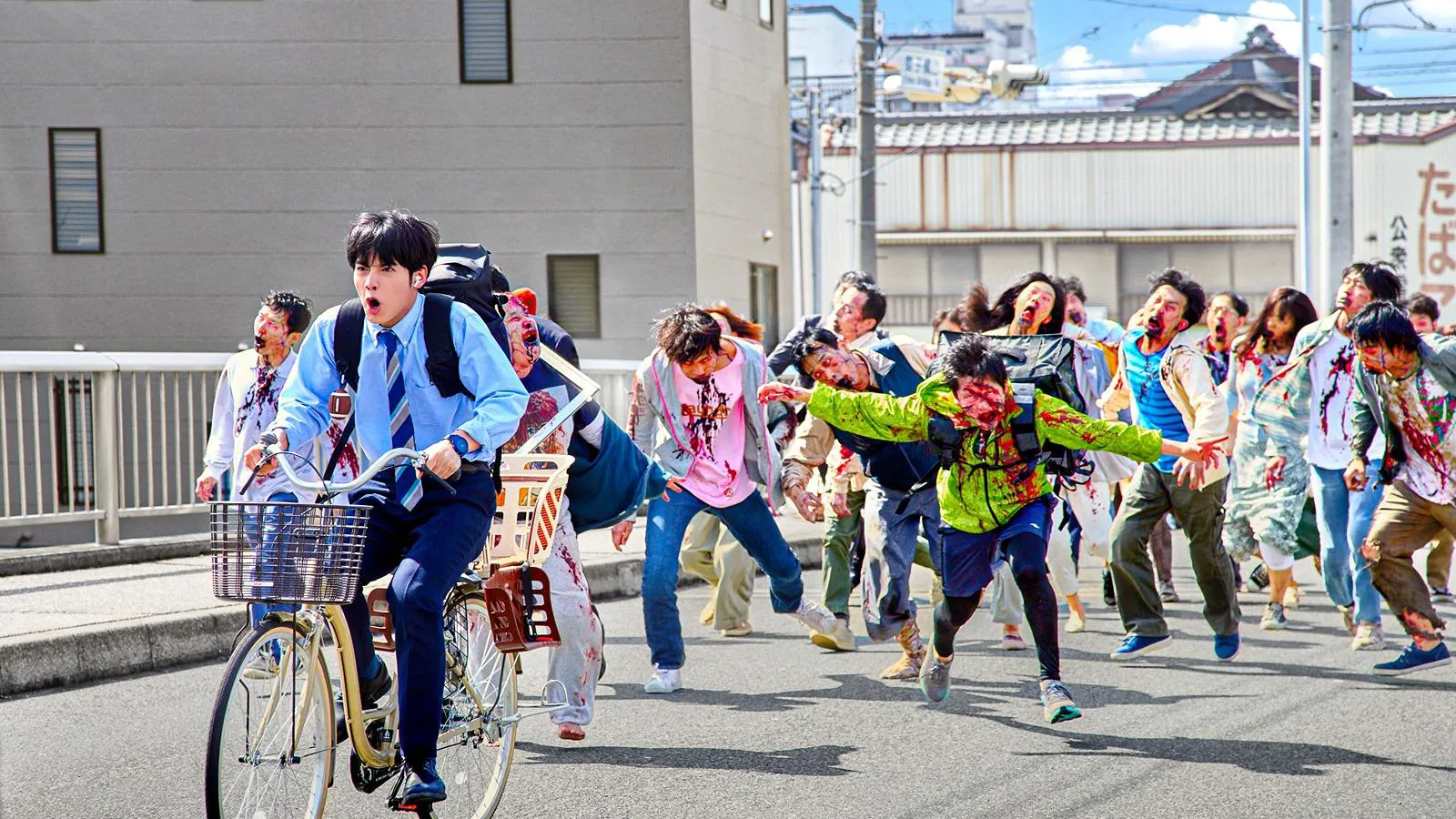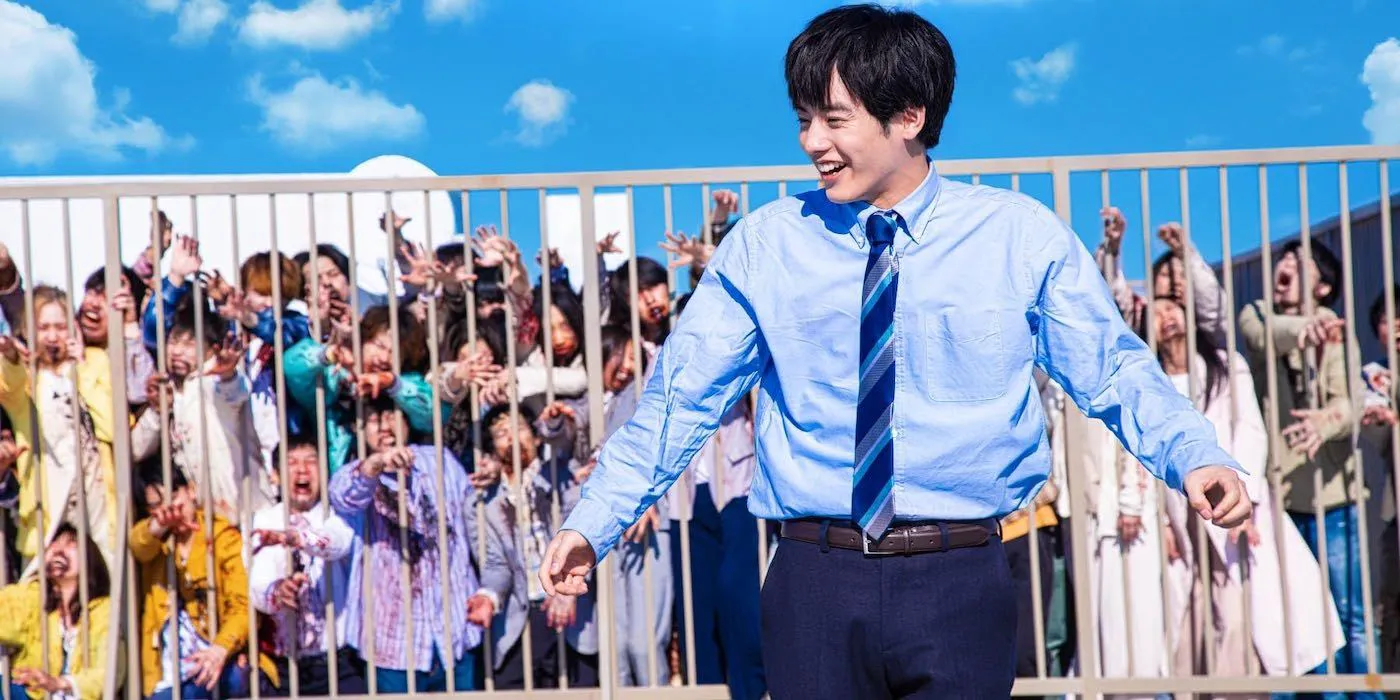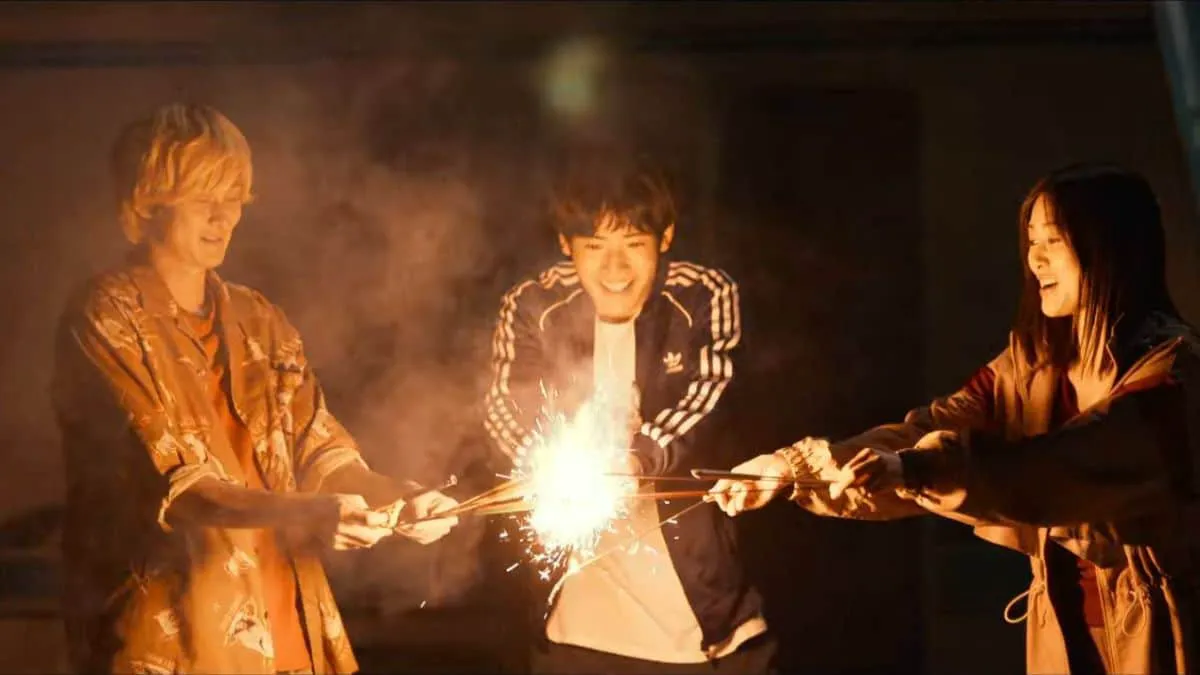Akira Tendo’s (Eiji Akaso) last year was like hell. He got what he initially thought was his dream job, but it turned out to be worse than slavery: on his first night, he worked overtime, and he didn’t get home until the third day. Since then, Akira has been living from paycheck to paycheck, and sometimes he thinks it would be easier to jump in front of a train than to endure such a reality. Perhaps that’s why the young man felt relieved when he finally realized that a real zombie apocalypse had arrived. While ordinary residents of Japan are thinking about how to escape the terrible disaster, only one thought is pounding in the young man’s head: no more work! Inspired by the new prospects, Akira takes on everything he has been putting off, making a list of a hundred things he wants to do before he becomes a zombie.

Eiji Akaso as Akira in a still from “Zom 100: Bucket List of the Dead”
The Plight of the Salaryman
In Japanese works, especially for adults, a burned-out office worker often becomes the hero. There is nothing surprising in this: the problem of overwork is so acute that death from it has even received its own term - karoshi. However, more and more often, the unfortunates die and end up in another (usually fantasy) world, so liberation from bondage, albeit in an updated reality, looks fresher.
The seinen manga of Haro Aso and Kotaro Takata, which shares the same name, is much more captivating not with fantastic elements, but precisely with a sense of freedom from a long-hated job. The film has retained the necessary emotions: the opening scene with the beginning of the zombie apocalypse shows how Akira is worried not about his life, but about the fact that he may get a reprimand for being late. The picture is indecently realistic: many in a similar situation, it seems, would think the same.

Eiji Akaso as Akira in a still from “Zom 100: Bucket List of the Dead”
Embracing the Apocalypse
The relief that fell on Akira’s head is literally intoxicating, which is why he perceives the nightmare that is happening completely differently than he should. Inspired by new perspectives, Akira seems to have forgotten about possible death and spends time on completely useless, it would seem, things: he makes raids for expensive meat and sauces, rushes headlong into the lair of evil spirits for his best friend, and in general engages in dangerous and seemingly useless things. Including before he decides to make that very list, which is included in the title.
Contrasting Realities
The contrast between gray working days and eventful post-apocalyptic days is clearly visible on several levels at once. Including in how individual characters behave: Akira meets those who, even in the conditions of the end of the world, maintain a working mood and discipline, which became unbearable for the main character. Others are fixated on survival and do not particularly see anything beyond the most necessary. Against their background, yesterday’s worker looks somehow especially alive - which sounds more than ridiculous precisely against the background of ubiquitous zombies.
As is often the case, “Zom 100” turns out to be a story not about carnivorous monsters at all. At some point, the metaphor is spoken out loud: the everyday life of mindless office plankton is called an existence similar to the life of a zombie. For traditional Japan, where work discipline is at a very high level, such a statement looks extremely bold.

Eiji Akaso as Akira in a still from “Zom 100: Bucket List of the Dead”
Action and Absurdity
However, “Zom 100” would not be itself if it did not offer a number of completely insane scenes, the best of which are worth watching the picture for. We are talking, as you might guess, about action: the film adaptation, although it has become somewhat more serious than the original source, is still able to surprise and entertain in a good way. For completely mind-blowing fun, it is better to turn to the anime version of the same name, which is only gaining momentum and has managed to show only part of the events from the film. The live-action, however, did not get worse from the seriousness: only some corners are smoothed out here, while the overall insane tone is perfectly preserved - the final battle alone is worth it.
“Zom 100” turned out to be a kind of dream of a better life, in which even the end of the world does not look so bleak. The message, alas, is relevant for many - so much so that you want to follow in the footsteps of Akira. Not into a world inhabited by zombies, but on the path to happiness instead of gray everyday life. Or at least dream about a happier future. Also a kind of freedom, albeit on a smaller scale.